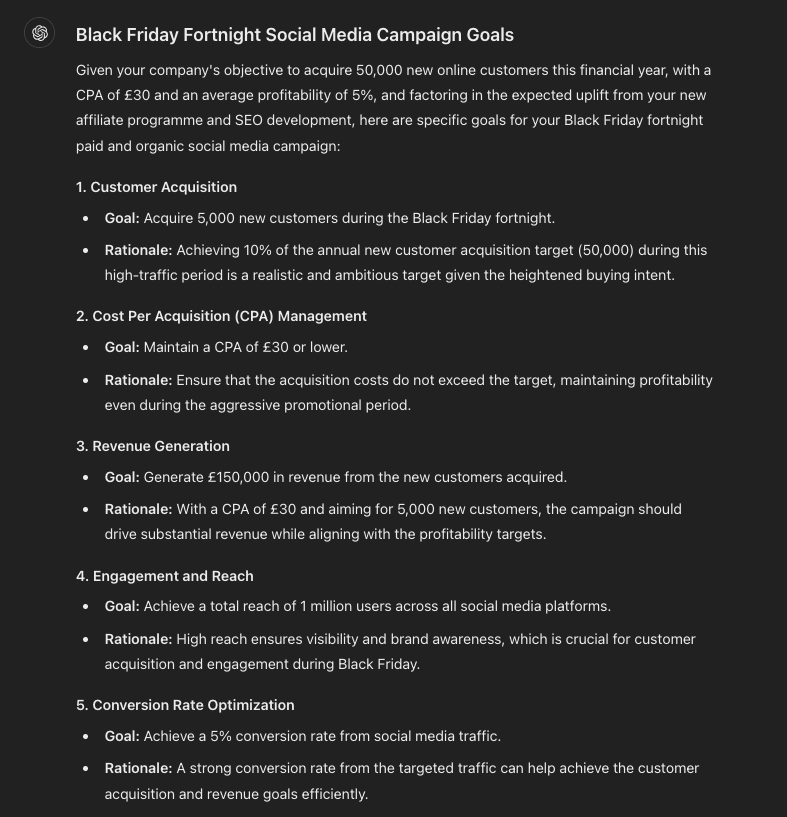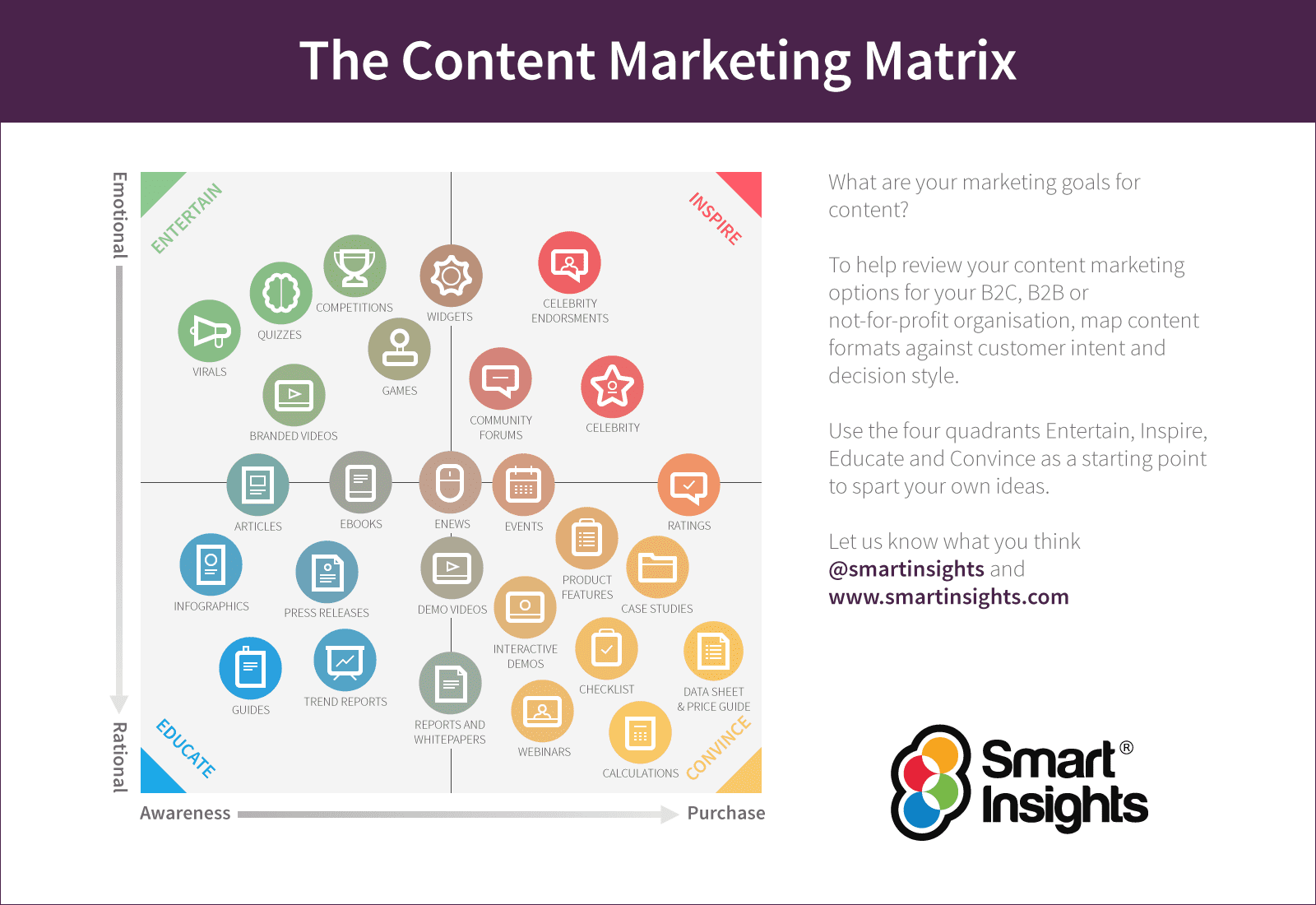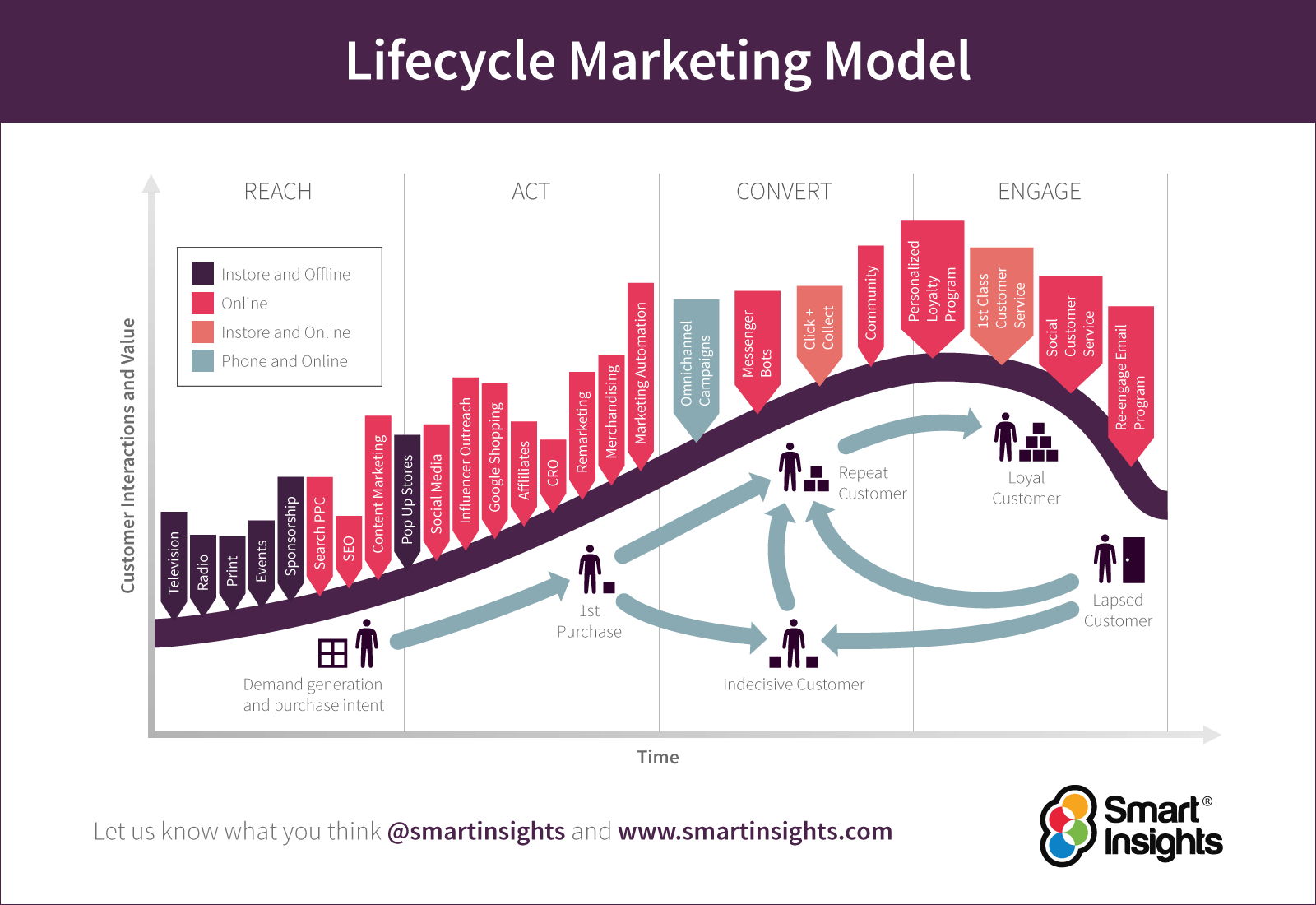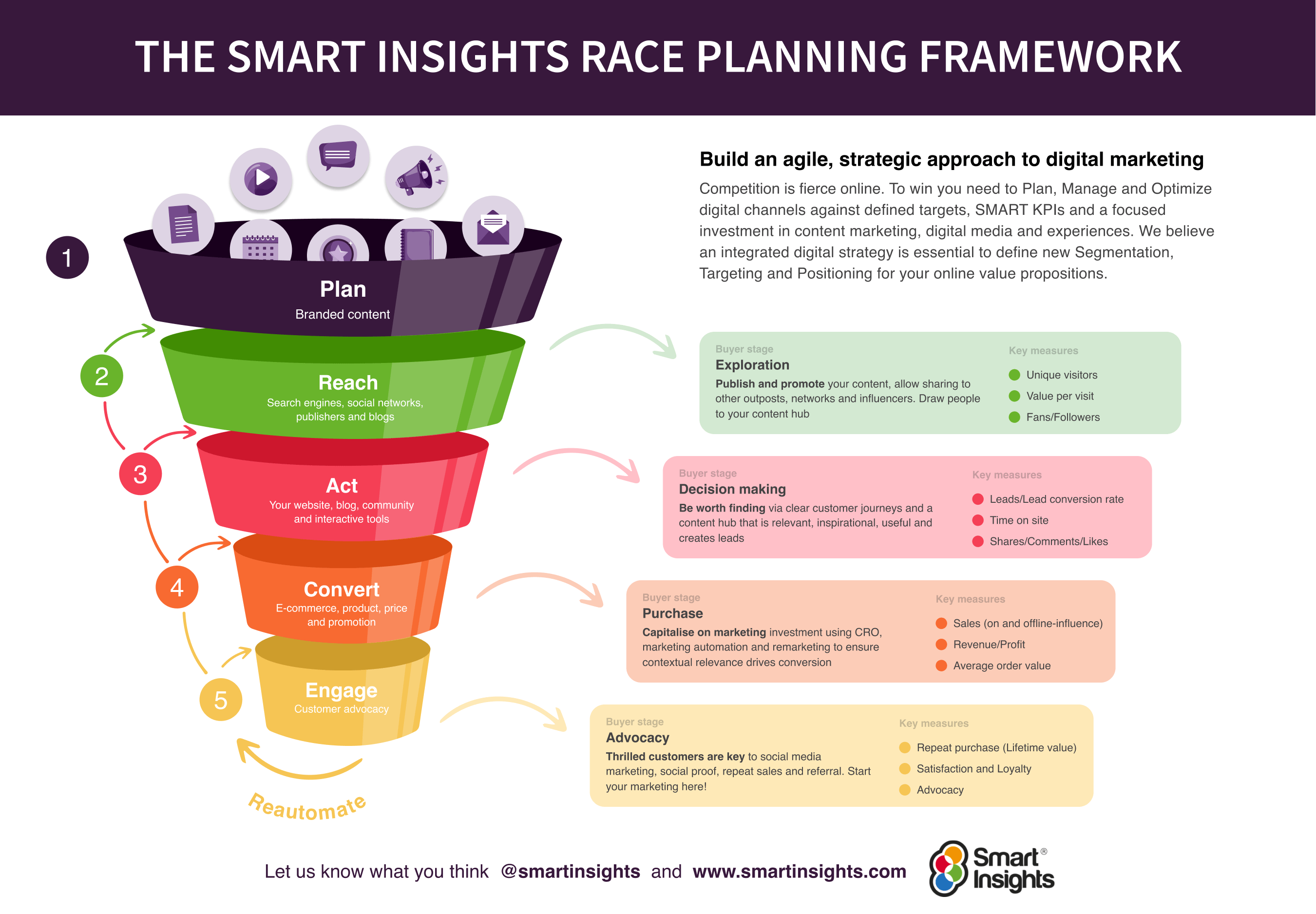Prompt AI-generated campaign insights on marketing strategy, optimization, audience analysis, and performance metrics
We all know that feeling of staring at a blank screen. Maybe you have an idea but you don't know how to articulate it. Or maybe you're clear on the objectives, but you're you can't align them with any new creative ideas. It's in these moments where the best marketers can stand out by choosing to adapt and improve.
AI marketing opportunities
If you've found yourself reading this blog, you're likely already considering using AI to optimize your campaign planning process. It's an exciting time, with AI regularly producing clear, trackable improvements on human-written content (such as a study where AI-generated email headlines demonstrated a 68% increase in engagement). And, with increasing demands on budget and time for so many marketers, the opportunities are game-changing for the early adopters.
AI marketing risks
But, with so much to consider, it can be daunting knowing where to start, and how to get it right. We regularly hear from members who are concerned about ensuring accuracy, creativity, privacy, compliance, and more, when using LLMs for marketing. It is telling that the biggest worry for using AI at work is cybersecurity, with 53% of organizations citing web security as an AI-related risk.
Human and AI collaboration for marketing
At Smart Insights, we recommend taking a collaborative approach to working with AI, propensity modeling, and Machine Learning. So, in the case of campaign planning, we recommend sticking to our tried-and-tested, strategic campaign planning framework to structure your plan. You can read up on this in Dr. Dave Chaffey's blog What are the six essential parts of a campaign planning template?
Or, keep reading to jump straight into our recommended ChatGPT prompt techniques for each stage of your campaign plan, plus our recommended risk-mitigation techniques too.
How many businesses are using ChatGPT and AI for Marketing?
Our 2023 Future of Digital Marketing report found 48% of marketers already using AI to assist with generating content, with an additional 10% planning to adopt it in the near future. We will release the results of our 2024 survey in the autumn, but no doubt it will be higher a year on.
It's not a surprise that so many marketers are upskilling, with AI technologies being reported to improve productivity by up to 40%. Clearly, collaborative AI-marketing skills are becoming even more important in the ever-evolving digital landscape.
If you're looking to upskill yourself/your team, we have released a new Learning Path dedicated to AI training for marketing. This covers a practical mix of strategy - such as governance, roadmaps, and MarTech, alongside tactical use of Gen AI for copywriting, SEO, email marketing, and creative imagery/video assets.
Core Module

Introducing AI for marketing
Part of the Sector technology innovation Toolkit
Learn how you can use AI for marketing, looking at the top-level capabilities of AI in a business and how to distinguish between tools.
Learn More
Smart Insights recommended 6 step campaign planning structure
Smart Insights Starter and Pro Members are already using our marketing campaign planning template to structure their campaign plans across 6 steps:
- Campaign goals and tracking
- Campaign insight and targeting
- Key campaign messages and offers
- Campaign media plan and budget
- Campaign asset production
- Campaign execution
So, now let's see how ChatGPT can support this structure...
1. How can ChatGPT help with setting marketing campaign goals?
ChatGPT can help you generate new ideas for measuring the success of your marketing campaigns. Working collaboratively with AI unlocks a fresh perspective which can help you think outside the box around how you set your goals, particularly if you ask more open-ended questions.
However, as the human participant in this collaboration, of course responsibility falls to you for ensuring these campaign goals/KPIs still align with the wider business strategy. Our 4-step template of Objective>Substantiation>Strategy>KPIs is a useful tool for guiding your prompt engineering.
For practical application, if you have just one overarching company objective and substantiation that you want to apply to all your ChatGPT prompts, it would save you time to write it into your custom instructions. But, for the example here, I've written the full prompt out in full and will show you the response below:
- "My company's main objective is acquiring 50,000 new online customers this financial year with CPA £30 and average profitability 5%. We are currently forecasting 40,000 sales this year, so looking for new growth tactics for the last 20%.
>>> Generate goals for my Black Friday fortnight paid and organic social media campaign"

Already, we are starting to consider different ways of approaching the end goal by setting specific campaign targets. With more iteration and a final human edit, I could envisage these goals being fit for your next campaign faster than starting from scratch.
Alongside goal setting, ChatGPT can assist in identifying key performance indicators (KPIs) that are most helpful for measuring success.
- "Suggest key performance indicators (KPIs) for tracking the effectiveness of this campaign."
- "Where can I find benchmarking sources for social media performance in my industry?"
Finally, don't forget you can save time by asking ChatGPT to set up UTM parameters and CRM automation too:
- "Create a sample UTM tracking and CRM automation plan for a company in my sector with these goals and KPIs"
2. How can ChatGPT help marketers generate target audience/customer insights for campaign planning?
ChatGPT can suggest ways to research and segment your audience based on demographics, psychographics, and behavioral data. Using AI to generate new customer personas removes any personal bias when compiling customer preferences, pain points, and buying behaviors. You may even pick up on new trends, but remember to continue to use your common sense when implementing these approaches within your strategy. Why not start with prompts such as:
- "What are effective ways to gather customer insights for a new online educational platform?"
- "Describe the target audience for a luxury skincare brand and their key characteristics."
- "Generate a customer persona for a millennial interested in sustainable fashion."
ChatGPT can also offer support with building segmentation and targeting strategies for your campaign. To prompt the most relevant answers, you'll want to share your existing targeting insights, this can be qualitative, such as anecdotes from your Customer Success Teams, or quantitative, such as anonymised CVS imports.
Of course, in any discussion about customer insights, you'll want to consult your company's AI-usage policy, if you have one. Or, start by reading more about what should be included in an AI for marketing governance policy in Dr. Dave Chaffey's blog.
Core Module

AI governance for marketing
Part of the Sector technology innovation Toolkit
Learn the benefits of and how to create an AI governance policy to streamline your use of AI in marketing.
Learn More
3. How to use Gen AI to optimize your campaign messaging, media, and asset production
Arguably, this is the most common use of AI for marketing - saving time and tapping into different perspectives by working collaboratively with AI to generate content. This is something I am doing nearly every day in my role here at Smart Insights and if you're completely new to Gen AI it can be a good way to dip your toes into some exciting new techniques.
Of course, it's not just ChatGPT that enables this working relationship. Marketers have a wide range of options available including copywriting tools such as Jasper, Writesonic, Hyper Write, and Byword AI. You can read more about these tools in Dr. Dave Chaffey's review of the best free and paid AI copywriting tools, or, Starter and Pro Members can access practical training in our dedicated module Using AI for Copywriting.
No matter which platform you're using to generate it, the most important thing about your content is that it engages the audience of your choice and encourages the behaviour you're aiming for.
We regularly receive positive feedback from members using our content ideation matrix to structure their content marketing strategy - and that is certainly a useful approach for those using AI to speed up their content creation too.

Similarly, it can be useful to map out which stage of your customer's journey, from awareness to purchase, different content assets are suitable for. This isn't something ChatGPT will do automatically for you, it's up to you to specify in the brief.
Our RACE Customer Lifecycle is a crucial tool for campaign planning, because it keeps the primary focus on the customer (not the latest tricks in LLMs!). So, I strongly recommend reading up on this as a precursor to any AI content creation...

Want to know more? Business Members can now access a dedicated structure for creating campaign messaging, media, assets, and more in our new AI for marketing Learning Path...
4. How can marketers use ChatGPT to optimize their campaign management?
The final stage is, of course, putting together all of the above elements of your plan to make the campaign a success. It's not a surprise that many marketers are already using AI, propensity modeling, and Machine Learning to unlock data and insights for their campaigns' pre-launch testing, real-time adjustments, and debriefs.
Before your campaign goes live, you can use ChatGPT to generate checklists and testing protocols to ensure all components, such as technical setups, content, and compliance, are in place:
- "What are the key elements to test in an email marketing campaign before launching?"
- "Suggest ways to monitor and adjust a PPC campaign to optimize performance."
- "Create a pre-launch checklist for a social media campaign."
During the campaign, you'll be looking for suggestions on real-time adjustments based on performance data too. Our members use the RACE Dashboard to track performance data, this can be enhanced with prompts such as:
- "How can I identify the most engaged segments of my audience based on my campaign data?"
- "What methods can I use to analyze customer sentiment and feedback from my campaign?"
- "What data points should I gather to understand how my campaign stacks up against industry benchmarks?"
- "What metrics should I consider to optimize the effectiveness of my ad creatives?"
- "What are some indicators of market trends that I should look for in my campaign data?"
After your campaign has finished, ChatGPT can assist in a detailed analysis to identify successes and areas for improvement. Our post-campaign analysis report template is a great starting point for marketers briefing colleagues, stakeholders, or clients on their campaigns' successes. Our template is structured using the RACE Framework, which you can see below.
I hope these 4 steps have been insightful for marketers looking to AI to improve their campaign planning processes. Don't forget to share this article with colleagues if you think it would be helpful for them too!





















